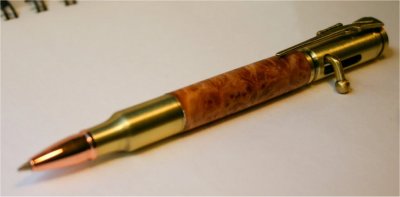Atopy
The most common skin condition in dogs at least in Cobb County is a condition called atopy.
This is manifested by any of the following symptoms:
- Itchy
- Pink flaky skin
- Almost always a huge component of foot licking
- Sneezing, snicking
- Airway issues
- Pink even red years
- Dry or brittle coat
But if you want to boil it down to the bare minimum, it is a dog that is generally itchy with foot licking and belly itching and redness. Why feet and bellies? It becomes important in a minute:
It is important to understand the causes. At one time atopy was considered an inhalant allergy. The belief was that the dogs were inhaling dust made of pollen and settled smog, and it was causing the skin to light up. More current speculation says that the reason it was believed to be an inhalant allergy is because it manifests usually during times of high pollen and or high air pollution periods. So it must be inhaled? Not really. The fact is that atopic itching is basically when a dog gets pollen and smog dust on its belly and foot services which creates considerable irritation.
 The significance of this is that many people have good results and can use less medication by keeping a dog rinsed or wiped off. Keep in mind not every dog even has a reaction to pollen and smog dust. But if your dog is one of those, wiping their feet and or wiping the belly on the daily can make a big difference. At least during periods of time when pollen and smog are prevailing in the environment.
The significance of this is that many people have good results and can use less medication by keeping a dog rinsed or wiped off. Keep in mind not every dog even has a reaction to pollen and smog dust. But if your dog is one of those, wiping their feet and or wiping the belly on the daily can make a big difference. At least during periods of time when pollen and smog are prevailing in the environment.
I often get the pushback that “my dog only goes outside for a minute in the morning and in the evening“. The thing is, it only takes that minute to pick up the ground level pollen and smog dust.
In fact, the dogs with the least problem with it are are outside most of the time and have developed an adaptation to it.
There is a huge genetic predisposition in a light colored dogs with pink skin. But it is not restricted to that genetic make up.
I said all that to say this, it’s probable you will be dealing with some variation on this for the rest of your dogs life. So, why not gain an understanding of what’s going on and as of factors we can employee to control it?
One of the modalities in the management of atopy is removing the pollen and smog dust from the coat. This is easier in dogs with short coats, so a crew-cut could be considered for dogs with long hair during the summer.
Keeping the coat moisturized with an emollient spray like the homemade Pantene spray is also effective at protecting the skin from direct irritation by the smog and pollen dust.
Antihistamines can make a difference, they are not curative, but might improve the Sith The situation by at least 15 to 20% and so it might be undertaken, where antihistamines like Benadryl, Zyrtec, and even Allegra could be recommended highly, I can give you dosing.
Benadryl (diphenhydramine) should be used 3 times a day
Ceterizine (Zyrtec) should be used 2 times a day
Allegra (fexofenedine) should be used 1 time a day. <= best choice.
A mainstay of therapy has been steroids. Steroids are available in a shot that lasts three days. Or pills that can be given over 7 to 10 days. Or a shot that lasts up to five weeks. So there are options in that regard. Steroids can cause unpleasant levels of thirst for the owner because the dog has to go outside four times a day instead of two times a day.
 Steroids may also have long-term negative side effects. Increased appetite and a thinning of the skin plus weight gain are the two or three most common symptoms. Steroids mess with carbohydrate metabolism so glucose balances can be thrown off.
Steroids may also have long-term negative side effects. Increased appetite and a thinning of the skin plus weight gain are the two or three most common symptoms. Steroids mess with carbohydrate metabolism so glucose balances can be thrown off.
Alternatives to steroid therapy include Cytopoint and Apoquel.
It’s kind of a short discussion of Apoquel because it causes cancer in 10 to 12% of the pets that go on it, most people will not consider that.
On the other hand Cytopoint , which is an injection given once every 3 to 4 weeks, is highly effective and not associated in anyway with cancer. It generates an immune response to one of the enzymes responsible for redness and itching in the skin. So the dog actually cannot mount an itch response to atopy or allergies because it lacks in the enzyme to do so. Cytopoint eliminates the need for steroids and the side effects on appetite and thirst that it has.
Soothing baths and moisturizing shampoo; perhaps those from Neutrogena are the best, as well as many moisturizing shampoos specifically for dogs which I have at my office, can be used just to make the skin feel better and to clean off the smog and pollen dust which is at the root of the problem.
Something else that seems to make a difference is raw honey, it is believed that by taking raw honey in the diet the dog can actually develop a certain tolerance for environmental pollen which of course shows up in large quantities in the raw honey. You do not want cleaned, bland, Sue Bee honey.
So the management of itchy dogs that feature atopy, which uses foot licking as it’s hallmark, begins with antihistamines and foot“ wiping and steroids when skin is being damaged, the use of a particular type of steroid decided based on how long we need the benefit.
With incomplete results, we might step up to stronger steroids, anti-histamine therapy and more aggressive soothing shampoos and wipe downs, and failing that, taking this step in to Cytopoint
Why not start with Cytopoint ? First, we need to confirm Atopy by utilizing a short course of steroids, antihistamine, and wipe down, which, if effective suggest that Cytopoint could replace all of that jazz. At which point if the client prefers Cytopoint as the mainstay of management, I am happy to do that because the side effects are minimal.
Here’s the thing: Cytopoint is quite expensive. For a large dog it could come almost $100 a shot. Keeping in mind that it would probably only need a shot like that on the once a month basis. But, all the dogs differ in their response.
There is one other option, which most people will not consider and that is: Moving to Colorado because in very dry environments with no smog, and no pollen, Atopy does not exist. So there’s that.
As you can see, this kind of itchy dog situation can’t be handled with a simple shot (Cytopoint ). And somehow protecting and wiping down the coat is one element of care that is virtually unavoidable in this particular situation. Sorry for the homework.





